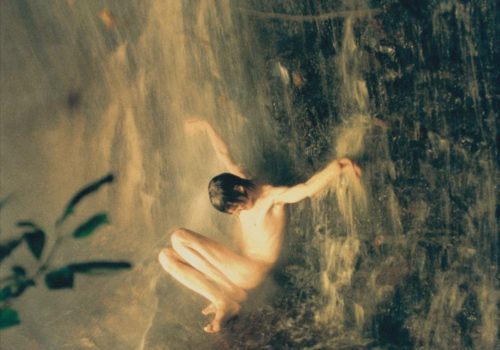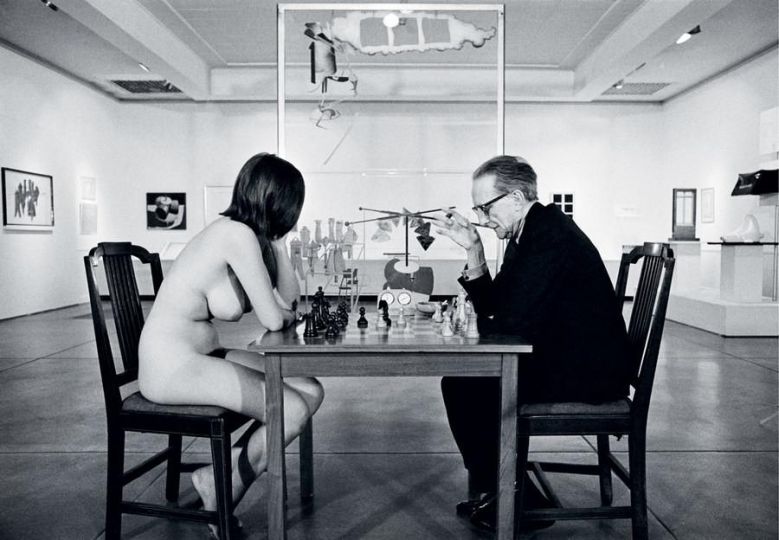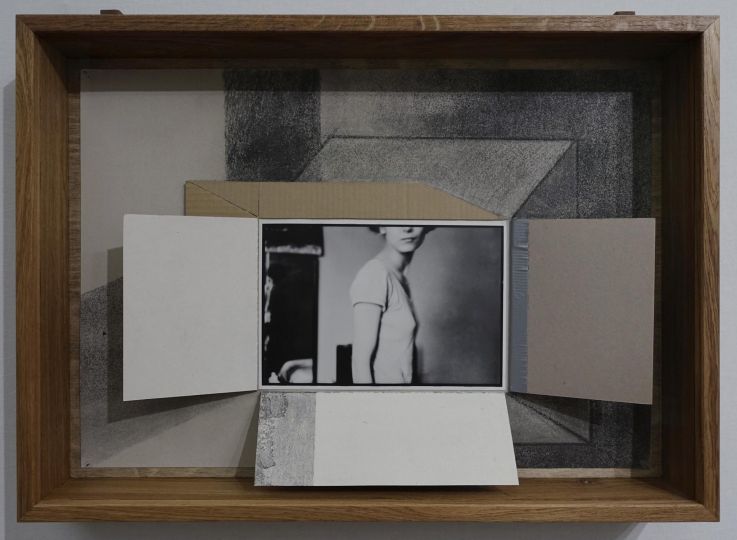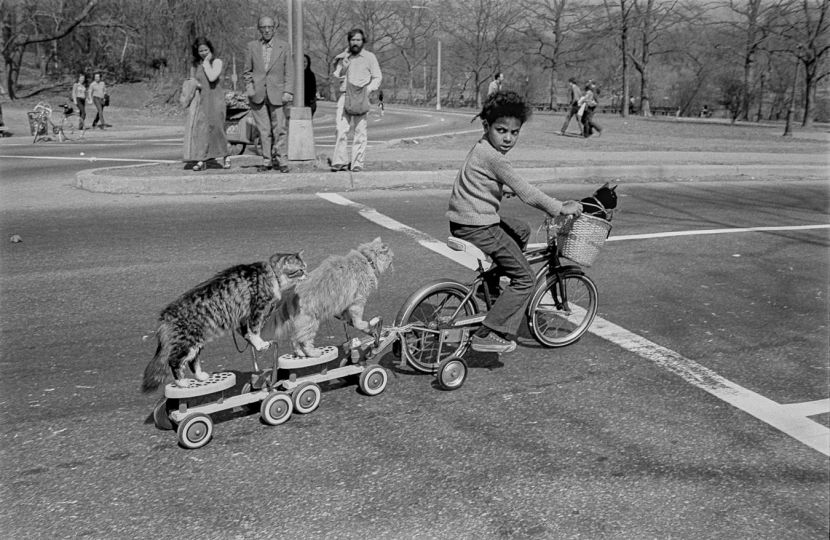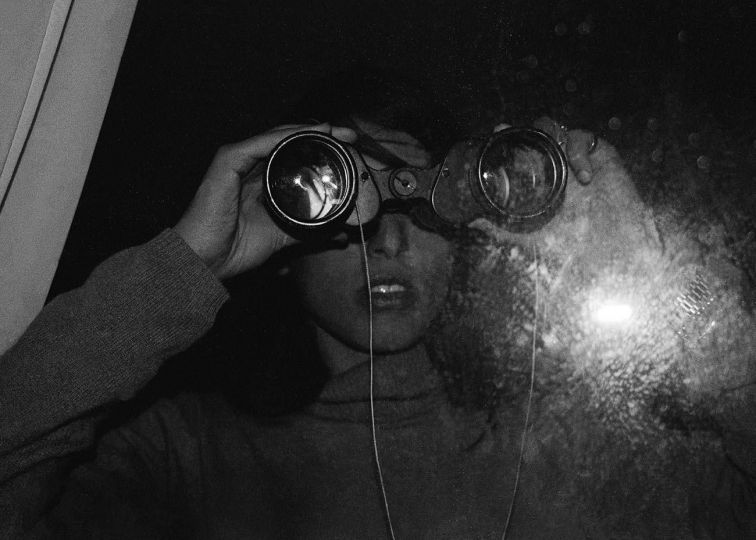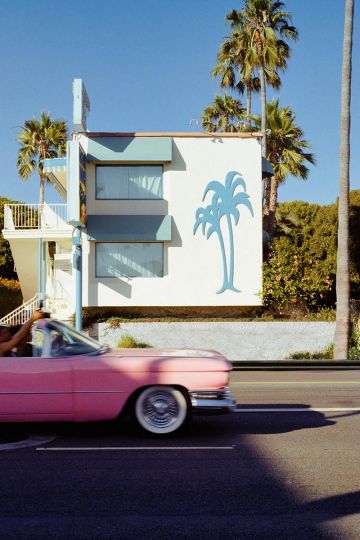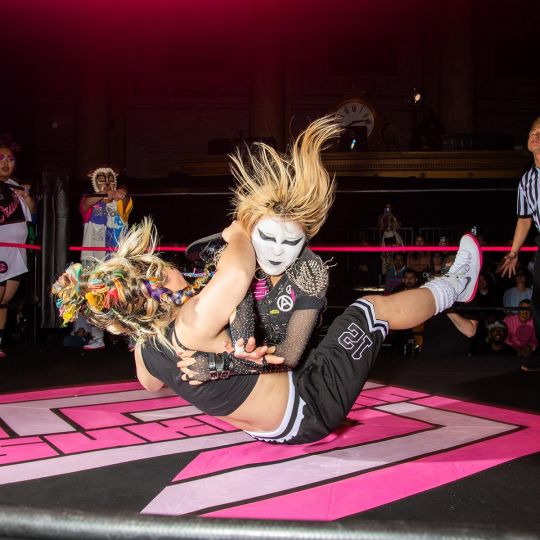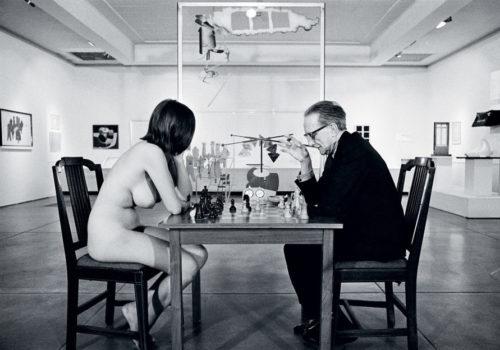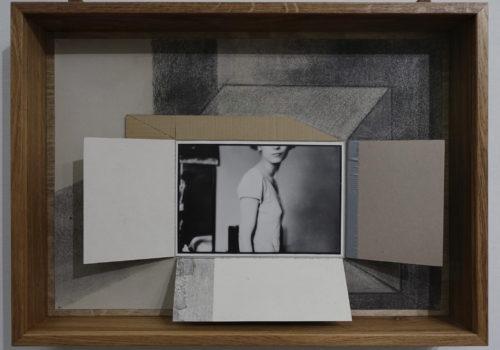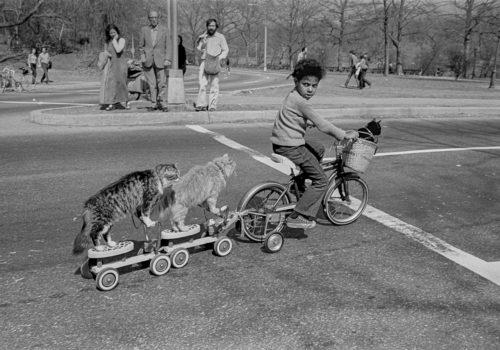ANDREA BLANCH: You’ve been going on yearly road trips since 2004. What kept this way of working new and exciting for over a decade?
RYAN MCGINLEY: The American landscape is so vast. There’s so much to explore. Every summer, I would just chip away a part of America. We would hit the road and shoot for three months straight. I would come back, and edit and have exhibitions, and then go back to the drawing board and figure out new things that I wanted to explore in America. There’s just so much, and I still feel like I haven’t come close to seeing what I want to see.
I’m so interested in different parts. Down south the landscape was so diverse and rich and interesting, with the swamps and the cypher trees. I spent summers doing different sand dunes in Colorado and Utah and New Mexico. I spent time in Washington State in the rainforest, and shooting along the Bay Area through Oregon, up through Seattle, WA. I did caves across America. That almost took two years because I was so into it, exploring all the networks of different subterranean environments. The majority of the caves are the area called TAGs, which stands for Tennessee, Alabama, Georgia, which is where most of the caves in the United States are. I’ve done so many things.
ANDREA: Are there any must-have qualities that you search for in every place you photograph?
RYAN: I really go for the landscape more than anything. Other than that, it’s just to explore somewhere I’ve never been. When I grew up, I never really traveled. I’m one of eight kids, so we could never afford to go anywhere, and we stayed in the Tristate area. So when I got to start doing road trips, it was exciting for me because I’ve only seen that stuff in movies.
ANDREA: What went on behind the scenes while you were working on the winter nudes in icy landscapes? It’s amazing for me that you got the people to do that.
RYAN: I think that the people who want to be part of my project are really dedicated. I take every measure possible to make sure they are comfortable. With the winter series, the first thing we did was to have a sauna. It was an ice fishing tent that can fit four people at a time. I would bring two propane heaters, and we would get the tent to about one hundred degrees. The models for my project would sit in that tent. Everybody would be in winter gear going to each location, so we were all suited up, and sometimes we would have to hike two or three miles to get to a really great place.
ANDREA: Were there any near-disasters?
RYAN: No, there weren’t. I worked with an ice climber. For all my projects, I have a producer who lets me know if my ideas are doable, and how we can do them safely. For the ice project, I got this great ice climber. I would say, “Oh, I have this idea of putting someone here,” and he would say, “Oh, ok. We could do that. Maybe we can’t put him there, but we can put him here. We could rig something so they’re safer. This is the time limit you have to do this to keep the person warm, etc.” Then with the models, I would say, “Ok, we have the spot where we want you,” and we would plan it out with all of our clothes on beforehand. Then they would go into the sauna to change, and we would do it quick. Then they’d just bolt. Some can last longer than others. Girls usually last twice as long as guys. They have a higher threshold for the cold, I guess for pain. How long anyone was out in the cold basically depended on the temperature. So if it was like twenty degrees, people would last about two minutes before they would be like, “Ok, I gotta go back in!” And if it was zero degrees, maybe about a minute. I would always bring about four models with me so there wouldn’t be much downtime for shooting. Once one person was done, another person would come out, and we accomplished a lot that way.
ANDREA: Were there any surprising or unexpected challenges in making those images?
RYAN: I guess an unexpected snowstorm came in, but that worked to our benefit, almost. I was an amateur snowboarder for years, that’s how I grew up in New Jersey, so I was pretty aware of the winter conditions. At one point in 2009, the New York Times hired me to shoot the Winter Olympics for them, so I spent three months with all the Olympic athletes across America while they were training. So I kind of knew how to shoot in the cold and keep people warm and how to work in that landscape.
ANDREA: Why were these landscapes the next big thing?
RYAN: I’ve always been a big fan of the Hudson River School, Frederic Church and Thomas Cole. Even in high school, I was interested in them. Overall, I love working outdoors.
It was also so I could stay close to home. My mom is getting a lot older, and I’m the youngest of eight. I wanted to be close to her and to spend more time with her, so it was for personal reasons also.
ANDREA: Your early work was more documentary, and now there are a lot more logistics and planning involved. You’ve said that while your early work was about documenting what was going on, your recent work is like making a movie. Can you elaborate?
RYAN: There’s a lot more people involved. When I started out, it was just me, and I would shoot what was going on in my life every night in downtown New York. In 2004, I really got into traveling. One of my friends, Mike Mills, made a film called “Thumbsucker”, and he asked me to come onto his film set and shoot photos. I got to see the way a team worked, and I was really into it. They were accomplishing so much. Over the course of two weeks, I got to see a good portion of a film being made. I was impressed by it, and I really wanted to work like that. Mike said, “Ryan, you should make a film. You’d be a great filmmaker. You should do it; write a script and just do it.” And I was like, “Yeah, I’m going to do that.”
I really wanted to make a road movie, and I started writing the script based on traveling around America. There’s a movie called “Two-Lane Blacktop.” It was a road movie made in the ‘70s, and I really liked it. I liked “Easy Rider.” I’m a big Dennis Hopper fan, and there are Terrence Malick’s movies. There’s a good one called “Days of Heaven” that I really love with Richard Gere.
And then I realized that it was just too ambitious for me at the time. I just wasn’t capable of pulling it off. But I had all of this info I’d collected about where I wanted to go and what I wanted to do, so I decided to go on a road trip and follow in the footsteps of photographers and books I like about traveling across America. And that’s how I started traveling.
ANDREA: Did you ever wish you could just go out and shoot without all the preparation and hassle?
RYAN: I like the pressure that it creates. I like making a plan and hiring people. You have to follow through with the project. You hire all these people to help, you book a whole itinerary of places to go, and you have to pay for a lot of it ahead of time. It just forces me to go through with the project, regardless of where I’m at that day. I feel like a lot of the times when there isn’t that pressure, I’ll be like, “It can wait today. I’ll just do it tomorrow.” A lot of artists suffer from procrastination, and I think that having a team of people lights a fire under my ass.
ANDREA: You often shoot people as small shapes in an expansive landscape, submerged in water, behind trees, as animals, etc. What is it about the relationship between people and nature that you keep coming back to?
RYAN: I like that nature is always changing. There are endless possibilities. I would go someplace I’d researched and think, “Oh my God, this isn’t working out.” Then I’d turn around and find something ten times better.
With nature, you know what you’re going to get, and you don’t know what you’re going to get, and I love that. It’s constantly evolving and there’s so much to explore. And I guess on a spiritual level, that’s my church. I love being outside, connected spiritually. When you leave the city and bring somebody with you, you leave so much behind. New York City is the place where my studio is, and I do a lot of business, but I prefer shooting in nature more than anything.
ANDREA: How did you arrive at the main themes in your work? Such as shooting people naked?
RYAN: I started shooting photos at the end of 1998, and at that time I hadn’t studied photography. My first year I studied painting. My second year I studied poetry. My third year I studied graphic design. But my last year, I realized I really wanted to become a photographer. That’s when I started practicing photography.
Then, for the first two years, I was narrowing down my possibilities of what I wanted to shoot, so I was shooting everything. I was shooting my family and architecture and my food. I would go around New York and shoot graffiti and my friends. I was living on Bleecker Street with this girl who was a dominatrix. She was really free with her body and she was the first person who was okay with being nude in front of the camera. I didn’t even have to ask her; she just liked to have fun and dance around and be sexy. And it was really great for me to just explore that.
I took an interest to that, and I also took an interest in skateboarding.
That was a big part of my life, skateboarding and snowboarding, from age six until I was nineteen. That’s pretty much all I did everyday. When I was skateboarding I would always have a camera with a fish eye lens, and I would be the one filming all my friends doing tricks and edit skateboard videos of people doing numerous tricks in a row. I just really like a lot of movement. That was always something that was interesting to me: doing things repetitively, trying to get the best version of somebody doing something. I guess I was just narrowing things down, the things I like. One of the things I really liked in high school was life drawing. I did that for five years to develop my portfolio. It was something I really loved, and my mom would always drive me to life drawing classes, so I always took an interest in the body. Once I started to photograph people nude, I was just really fascinated by it.
And once I realized I was capable of blowing up my photo to poster size, there was something about that that really blew my mind. My whole bedroom as a kid was just covered. You couldn’t even see any of the wallpaper because it was just covered with posters of rock bands that I liked and stuff pulled out of magazines. When I realized I could make my own posters. I was like, “Wow! So cool!” I loved it.
So I managed to narrow down my interests in photography, and it was sort of like nature, movement, and nudity. Those were the three things I was interested in. It gave me an original voice, and I think people were just really responsive to it. It felt very comfortable and easy for me to do.
ANDREA: What was it like for you early on in your career?
RYAN: The first five years, I feel I was sort of in the history of downtown New York, from 14th Street to Canal Street. I was trying to find my voice—publicly, since I got successful at a very young age. I was participating in the lineage of Allen Ginsberg, photographing his group of artists, to Larry Clarke, photographing his group of artists.
I feel like from ‘98 to ‘03, I was photographing in this twenty-block radius that other people had also made a large body of work in. It’s almost like a school or some- thing, like “Downtown.” So yeah, I had just come to New York and was discovering Downtown. Like most artists, I was photographing my tribe, and everyone was trying to figure out how to be artists. Of course, most artists were wild and went out every night and stayed up all night. It was a tight group of people who didn’t really have much interaction with the outside world at all. We were a very insular family, trying to figure out how to support ourselves as artists and how to live as artists. Figuring that out has a lot of turmoil. Being an artist is the hardest career one can choose to do. There’s not much of a road map for it. Getting advice from people isn’t the easiest thing.
ANDREA: Who or what inspired you early on?
RYAN: Early on, I was inspired by a lot of the movies I mentioned earlier. I was really inspired by Terrence Malick—”Badlands” and “Days to Heaven” were really inspiring. Then there were certain books that I felt so inspired by, like Theatre of Manners by Tina Barney. I loved that book and would look at it all the time. She got so deep in her world. She just got so deep with the people, and I felt like the level of trust and intimacy in the photos was something I hadn’t seen. And it was really a world that I had never experienced, like Laura Ashley, that kind of household. Another book I looked at when I was young was Jack Pierson’s All of a Sudden. I think it comes back to that thing of people having a specific vision of a very small world. Things like that really inspired me.
ANDREA: Who inspires you now?
RYAN: I’m inspired by a lot of younger artists these days. There’s an artist named Patrick Collins that I really like, and I think that there’s sort of a movement happening downtown of all of these young girls, and I’m close with a lot of them. And there’s an artist named India Salvor Menuez who I really like also.
I’m just really excited about their energy. I’m excited by how they have such a tight group and are all supporting and championing each other. Just to see them blossom as artists, getting success and being able to support themselves, is great. There’s another writer named Karley Sciortino, she also goes by the name Karley Slutever. She has a website called “Slutever” where she writes about sex and her experiences. Yeah, those are the people I really love.
ANDREA: I wanted to ask you about your series with the animals. I thought some of the photos must have been very difficult shots to get. Were the animals trained at all?
RYAN: I shot that series over the course of a year and a half. I went to different animal rescues, to pet stores, to zoos, and to personal owners that owned a lot of different exotic animals. I kind of made a road trip out of it. I just went across the United States and shot all these different people’s animals. So yeah, a lot of them were trained animals. I would bring my colored paper and set it up in the basement or on the side of a barn. Basically, each day consisted of how many animals somebody had who they were willing to let me photograph with a model.
A lot of those photos are happy accidents that happened. There’s something about the spontaneity of the animals’ behavior and the honest reactions that happened between them and the models that was unpredictable and really fascinated me. I think that was the thing that was interesting: it had this unpredictability that I can’t get in the studio.
ANDREA: Can you describe your studio?
RYAN: My studio is in Chinatown. I’ve been there since 2004. Before that, I was just in my apartment, and I had all my photos under my bed in the East Village. I actually lived in my studio from 2004 to 2008. I had the front part, and the painter, Dan Colen, had the back part. We lived together for ten years. He was one of my close friends from New Jersey growing up. And then, since 2008, it’s become a full studio office, and I employ six people. I have a studio manager, a casting director, a videographer, a retoucher, a choreographer, and a photo assistant. We work here Monday through Friday, 10am to 6pm, and the studio itself is sort of like an L shape. It has a very big library in it that takes up almost the entire studio with photo books and books about art. The back studio is where I photograph people for my “Yearbook” series, so that’s filled with lots of colored paper and lots of different lighting equipment. All the walls are magnetized, so we could move photos around easily and look at different photos in different sizes.
ANDREA: I’d like to talk about your commercial work for a minute. What is it about your work that translates so well commercially?
RYAN: I think that a lot of people who work in fashion advertising see my photos and they see people naked. Honestly, I think they see them as mannequins. They can picture their clothing on the photos that I’m taking. And I think that there’s energy, sort of like honesty in my work, which a lot of people want to bring to their brand.
ANDREA: Do you find it difficult to straddle the art and commercial worlds?
RYAN: No. I mean, most of the projects I take on commercially are stuff that I’m interested in. You’ve got to know when you work commercially that you’re sort of bringing two identities together. For instance, Levi’s is such a unique take on Americana, and they would say to weave in nature and cowboys. That was very easy for me to work with because I feel we were both coming from the same place. Then on the other hand if you bring in someone like Christian Dior—that’s another company that I’ve worked with—their brand identity is so unique and different from where I’m coming from. We sort of have to have a baby together, to come at it from two different places and see where it lands.
It’s interesting to work for different brands or even different artists. I’ve worked for people from Beyoncé to Katy Perry to Lady Gaga. To see where they are coming from, to really work with somebody and make something with them, when you’re coming at it from two different places, is interesting. I’m always open to it.
ANDREA: Do you feel you can keep your artistic integrity doing commercial shoots? How much input do you have, as far as the creative idea?
RYAN: It’s always collaboration. Obviously, when I’m working on my own stuff, that’s uniquely my vision. I’m always collaborating with somebody to get some ideas, but with a brand, it’s a meeting in the middle. I would say that it’s more like 50/50. I always go in knowing that: I know that I’m trying to bring their vision and my vision together.
ANDREA: Several recent campaigns you’ve worked on have focused on diversity in identity (race, gender, etc). Is that of your choosing, or is it the advertising agency’s/ the brand’s?
RYAN: I’m interested in that. One of my favorite things to do is to cast. I think, more than anything, I’m interested in people, so I love casting and finding people and hearing about their lives. It’s a really big part of my artistic process, so that makes me very happy. I think that in the recent projects you’re talking about how I tried very hard to bring on people who may not normally be in advertising, but who I’d worked with a lot in my personal projects. Whether it’s a personal project or for a magazine or company, I try to have a very big say in the casting.
ANDREA: What’s next now that you’ve decided not to do the road trips?
RYAN: I didn’t expect it to happen, but I ended up having all of these survey shows of the last seventeen years of taking photographs. Last May I had one in Amsterdam, I recently had one in Italy, and I literally just came back two days ago from one in Tokyo. So I’ve been spending a lot of time setting up those shows and reflecting on my photographs since I started. That’s where I’m at right now.
ANDREA: Now that you’ve had a chance to really look back at your work, is there any picture or series that you love in particular?
RYAN: I think that there are two bodies of work, the caves and the ice photos, because they’re things that I’ve never ever seen in photography before, and I felt were truly original. I do a lot of research to figure out where I want to go, and for years I would research photos of people in landscapes in different seasons. I hadn’t seen cave photographs with people nude in them, or even many cave photos at all. And there are no images of people nude out in icy landscapes. The only photos that I ever saw would be people who were in a sauna in Estonia or something. And they’d go and roll out in the snow and hop back in the sauna, but it was always very close. There wasn’t anything like a really beautiful landscape. So those two projects feel really original and interesting when I look at them.
ANDREA: You took one picture of somebody over Times Square, swinging. How’d you do it?
RYAN: It was this rapper, M.I.A., who I was close with and loved. The New York Times was doing a story on her and she was on the cover, so she asked me to take the pictures. She said, “I want to do something really New York and really crazy.” So what I did was I set up a swing. I’ve worked a lot with stunt coordinators, so I drew this idea on a napkin, and I showed it to my stunt coordinator and said, “I kind of want to build a swing set on top of a building and have somebody swing out off of it.” And he was like, “We can do that. They can’t swing out off of it, but I can get it close enough that they look like they are.” Basically, what we built is what they have at a concert that they put the lights on—a steel truss. Then we made a swing and a harness that went from the swing up the person’s back. We constructed it, and we got a building to permit it. We were on 8th Avenue, and we put it right in front of Times Square, so we had that as our backdrop. Whatever I’m asking someone to do, I’m also going to participate. I got on the swing, and they put the harness on me, and I swung out. It was such an amazing feeling, being able to see the city on a swing, swinging out almost over a building—it was like the best roller coaster ride ever.
Interview by Andrea Blanch
Andrea Blanch is the founder and editor in chief of Musée Magazine, a photography publication based in New York, and a fashion, fine art and conceptual photographer.
This interview was published in the issue 15 of Musée Magazine in July 2016.

